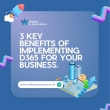Several prominent companies have successfully integrated Enterprise Resource Planning (ERP) systems to enhance their operational efficiency and adaptability. Companies like Amazon, Starbucks, and Toyota exemplify effective ERP implementation, leveraging tailored solutions to streamline processes and drive automation. For instance, Amazon integrates CRM, ERP, and SCM for seamless operations, while Starbucks’ Oracle ERP enhances visibility and automation, leading to significant revenue growth. Toyota’s holistic ERP approach supports real-time analytics and modular customization, maintaining its competitive edge. Exploring these success stories can provide valuable insights into the benefits and best practices of ERP implementation.
Key Takeaways
- Amazon: Utilizes SAP ERP for enhanced operational efficiency and big data insights, leveraging corporate agility and competitive advantage.
- Starbucks: Implemented Oracle ERP to automate back-office processes, achieving significant improvements in efficiency, productivity, and service quality.
- Toyota: Integrated finance, HR, supply chain, and manufacturing operations with an adaptable and scalable ERP system for informed decision-making.
- Lyft: Utilized Oracle’s Fusion Cloud ERP for streamlined financial operations, demonstrating effective planning and execution strategies.
- Western Digital: Consolidated systems with Oracle Cloud ERP, achieving streamlined business processes and improved efficiency.
Amazon’s ERP Success Story
Amazon’s ERP success story is deeply rooted in its strategic integration of various enterprise systems to enhance operational efficiency and customer satisfaction. This integration includes Customer Resource Management (CRM), Enterprise Resource Planning (ERP), and Supply Chain Management (SCM) systems, which collaboratively serve to create more satisfied customers and profitable marketing campaigns while efficiently managing inventories and supplier relationships.
By implementing tailored IT solutions, Amazon has been able to adapt to the changing retail environment and maintain a competitive advantage through innovation and operational optimization, demonstrating the importance of Retail & Leisure Solutions.
- Key Components of Amazon’s ERP Success:
- CRM: Essentials include collecting and sharing customer data, automating sales and marketing processes, and enhancing customer support.
- ERP: Centralizes core business operations such as purchasing, supply chain management, and finance, ensuring streamlined and efficient processes.
- SCM: Focuses on managing supply chains effectively, ensuring timely inventory management and supplier coordination.
This strategic integration allows Amazon to leverage big data insights, ensuring corporate agility and a competitive advantage.
Starbucks Simplifies Operations
Starbucks’ operational simplification is a notable example of how integrating enterprise systems can enhance efficiency and customer satisfaction. The company implemented Oracle ERP, a cloud-based software solution that automates back-office processes and day-to-day business activities. This includes financial management, supply chain management, project management, accounting, and procurement.
By leveraging comprehensive IT solutions tailored to their needs, Starbucks has been able to adapt quickly to market changes and maintain a competitive edge.
Starbucks’ ERP system provides a unified enterprise view, encompassing all functions and departments, and an enterprise database where all business transactions are recorded and monitored. This integration has led to significant improvements in efficiency, productivity, and service quality, while reducing service costs and enhancing decision-making capabilities.
Key strategies for success included a phased approach focusing on Canadian and US stores first, close IT and business collaboration, customized training programs, pilot testing, and ongoing enhancements.
These efforts resulted in complete visibility into operations, supply chain optimization, increased speed and agility, enhanced customer experience, cost control, and financial discipline. The implementation has supported tremendous business growth, including a 25% increase in earnings and a 60% revenue growth from 2011-2019.
Toyota’s Integrated Approach
Embracing a holistic approach to integration, Toyota has successfully streamlined its operations by leveraging cutting-edge enterprise systems. The company’s integrated approach to Enterprise Resource Planning (ERP) implementation has been a key factor in its success.
By integrating various business functions, such as finance, human resources, supply chain management, and manufacturing operations, Toyota has achieved significant improvements in efficiency and productivity. This aligns with best practices in tailored IT solutions that are essential for optimizing organizational performance.
Toyota’s ERP system is designed to be highly adaptable and scalable, allowing the company to quickly respond to changing market conditions and customer needs. The system’s modular architecture enables easy customization and integration with other systems, reducing the total cost of ownership and improving user adoption.
Key features of Toyota’s ERP system include:
- Financial management: handles billing, accounts payable/receivable, general ledger, budgeting, and tax reporting.
- Business intelligence: provides real-time analytics and visibility for informed decision-making.
- Supply chain management: manages procurement, inventory, and order fulfillment.
- Human resource management: streamlines payroll, time tracking, benefits, and performance management.
- Manufacturing operations: includes product configuration, material requirements planning, production scheduling, and forecasting.
This integrated approach has enabled Toyota to maintain its competitive edge in the automotive industry.
ERP Benefits for Businesses
Numerous businesses have realized significant benefits from successful ERP implementations, including improved operational efficiency, reduced costs, and enhanced decision-making capabilities.
One of the primary advantages of ERP systems is their ability to streamline and automate business processes, reducing manual labor and the risk of errors. This automation leads to improved efficiency and productivity, allowing employees to focus on more strategic activities.
ERP systems also provide real-time access to data, enabling managers and employees to make informed decisions quickly.
Key benefits of ERP software include:
- Operational Efficiency: Streamlines and automates business processes, reducing hours spent on manual tasks.
- Improved Decision-Making: Provides real-time access to data for informed decision-making.
- Cost Savings: Reduces operational costs through improved efficiency and reduced waste.
- Enhanced Collaboration: Fosters cross-functional collaboration by integrating various business functions into a single platform.
- Data Security: Centralizes data, enhancing security and accuracy.
Choosing the Right ERP System
Choosing the right ERP system is a critical step in achieving the operational efficiency, improved decision-making, cost savings, enhanced collaboration, and data security benefits that ERP software offers.
To select the appropriate ERP system, several key factors must be considered.
- Identify Business Needs and Goals: Understand the specific problems you need to solve and the features required to support your operations.
- Research and Compare ERP Systems: Look for systems that match your needs, comparing their pricing, implementation costs, and support options.
- Evaluate System Fit: Assess user experience, integration with existing systems, and scalability.
- Consider Implementation Process: Choose a vendor with thorough support and allocate sufficient time and resources.
- Long-Term Support and Maintenance: Confirm the vendor offers ongoing technical support, software updates, and training.
Overcoming Implementation Challenges
ERP Implementation Success Stories
Overcoming Implementation Challenges
ERP implementation can be a complex and challenging process, but many companies have successfully implemented ERP systems by overcoming common challenges. One key challenge is ensuring executive support and involvement throughout the implementation process. This helps to secure resources, manage expectations, and drive organizational change.
Another challenge is managing stakeholder expectations and ensuring that all users are properly trained and supported. This can be achieved through clear communication, thorough training programs, and ongoing support.
To overcome these challenges, companies such as Lyft, Hormel Foods, and Western Digital have implemented successful ERP systems. Lyft, for example, used Oracle’s Fusion Cloud ERP to streamline its financial operations and achieve scalability.
Hormel Foods standardized its systems on a single cloud platform, automating many processes and improving efficiency. Western Digital consolidated its systems using Oracle Cloud ERP, streamlining finance and supply chain processes.
These companies demonstrate that with proper planning, support, and stakeholder involvement, ERP implementation challenges can be overcome, leading to significant operational improvements and business growth.
Best Practices for ERP Success
To guarantee a successful ERP implementation, several best practices must be adhered to. These practices guarantee that the implementation process is well-structured, efficient, and aligned with the organization’s goals.
Here are some key practices:
- Use a Methodology: A methodology provides a roadmap for the implementation process, guaranteeing that all steps are systematically followed and that the project stays on track.
- Test Thoroughly: Extensive testing guarantees that the ERP system functions correctly and supports business operations effectively. This includes testing individual tasks and entire business processes.
- Integrate Early: Integrations should be done early in the project to avoid delays and guarantee smooth coordination with external parties.
- Communicate Often: Clear and frequent communication among team members and stakeholders is vital for managing expectations and addressing issues promptly.
- Troubleshoot and Optimize: Identifying bottlenecks and optimizing the system helps in improving efficiency and productivity.
- Establish a Dedicated Team: A skilled team with a project manager, executive sponsor, and key business representatives guarantees that the project is well-managed and meets business needs.
These best practices are fundamental for overcoming implementation challenges and achieving a successful ERP deployment.
Conclusion
Effective ERP implementation is essential for businesses to enhance operational efficiency and adaptability. Successful companies like Amazon, Starbucks, and Toyota demonstrate the benefits of tailored ERP solutions. Key factors for success include strategic planning, choosing the right ERP system, and overcoming implementation challenges. By following best practices and learning from successful examples, businesses can achieve significant improvements in productivity, customer service, and revenue growth through effective ERP implementation.























